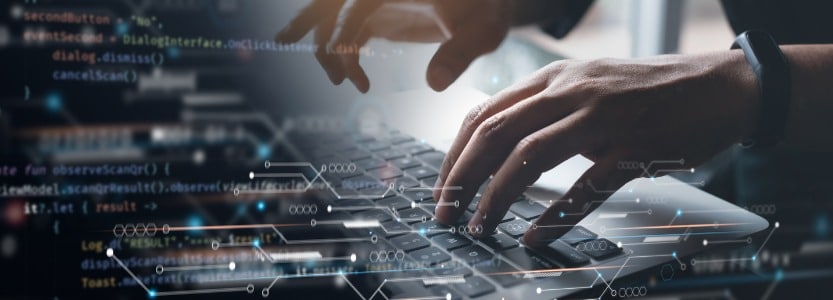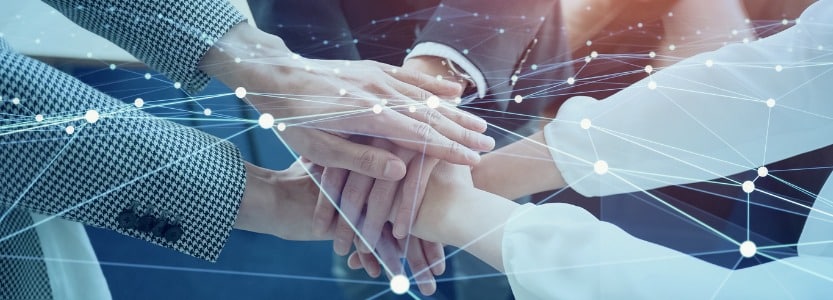Full expensing: can you save on software?
Updated 19th July 2024 | 7 min read Published 4th December 2023

The UK economy continues to present challenges for businesses of all sizes, and many expected further incentives for business investment in this year’s Autumn Statement.
Following the Chancellor’s announcement, full expensing hits the mark – now made permanent, UK businesses can expense 25p for every £1 they invest in plant and machinery; the definition of which includes lots of other areas including technology.
This is a substantial incentive for businesses, but while the Government has provided some solid guidance on how to apply full expensing to hardware, the same cannot be said for software.
So just how can full expensing help you save on software?
What software can you expense?
You’d be surprised at what falls under the ‘plant and machinery’ umbrella.
Heavy machinery, office equipment and some vehicles – most tangible capital assets - can be expensed back under full expensing. When it comes to software, it’s a little more complex. This is because for software to be eligible under the scheme it must qualify as capital expenditure.
The good news is that to be considered capital expenditure, software can be either off-the-shelf or custom-designed for your business.
But there are a few more boxes to tick before your accountant can give you the go-ahead, including:
- It must provide benefits that extend beyond a year (That’s true of most software tools, so tick!)
- It must be used for more than general purposes that may be classed as an operating cost. (Again, we aren’t sure you’d class many software applications as ‘general purpose’ as most are specialist and serve a specific purpose)
- The cost must be amortised/depreciated over its useful life (It’s worth discussing the implications of doing this with your accountant rather than treating the software as an operating expense)
The general rule of thumb here is that if the expenditure is on replacement software (e.g., changing from one program to another), it might be viewed as general purpose and better accounted for as revenue expenditure or OPEX. This would be the case also for upgrades to existing software.
However, where the expenditure is on software that did not previously exist in your company (e.g., you are automating processes for the first time) it can be classed as capital expenditure and fully expensed. Say perhaps that you have been using Microsoft Excel to manage something, but you now want to buy a proper fit-for-purpose system instead, you’d be fine under full expensing.
What if your software is bought as a subscription?
Software subscriptions are trickier to navigate, so let’s break it down.
Software subscriptions are typically treated as ongoing operational costs as there is no large upfront costs that need to be capitalised or depreciated over time. However, there are certain elements to these purchases that can be considered capital expenditure.
For example, multi-year subscriptions could be treated as capital expenditures due to the long-term benefit it provides your business. Also, if you need to customise your software to fit your business needs or integrate with existing systems, you can count those costs as well.
There are certainly opportunities here but again, it’s recommended you seek advice from your accountant to maximise the benefits.
What’s in it for you?
No point in waiting around - now is the time to invest in that software you’ve been eyeing up.
Taking advantage of full expensing will immediately boost cash flow, an opportunity not to be wasted in this economy.
Further investment facilitated by full expensing can lead to job creation and overall business growth without the financial headache.
What’s more, the latest tools and technology are essential to stay competitive in the business jungle. Full expensing makes upgrading your software a smart move without burning a hole in your budget.
The best part? Instead of dealing with complex tax schedules spanning years, accountants can immediately deduct the full cost of your new software, ultimately creating financial flexibility and streamlining reporting.
Get the most out of your investment with IRIS
We’ve got a number of scalable software solutions you can save on! Our award-winning software provide long-term benefits for your business and can be easily customised and integrated to fit your needs.
Investing in software under full expensing is a win-win for your business, so what are you waiting for?
The IRIS Success Kit for SME’s is here to get you started or give your business a boost. Whether it’s guides about best practice or practical industry insight, IRIS has what you need. Click here to visit the support hub.











